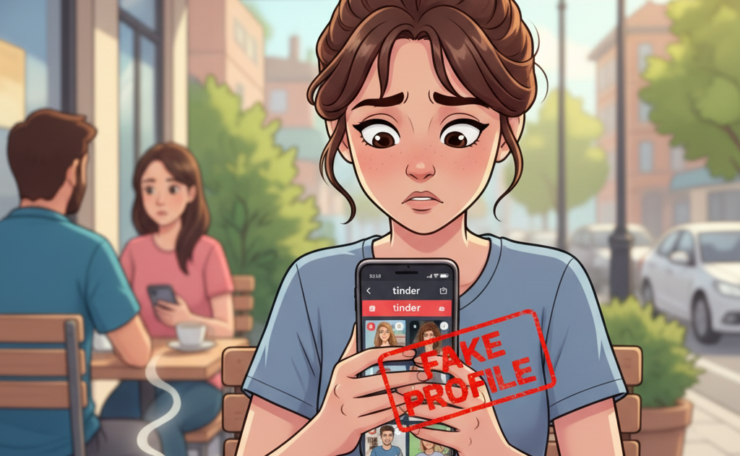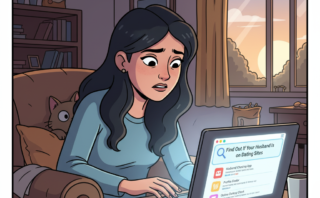Hey, I’m Sam from San Diego. I spend my days between work and the beach. Tinder’s been around since 2012. Now it has 75 million users every month. People use it for dates, hookups, or just to see what’s out there. It’s free and easy. That’s why so many locals are on it.
But fake profiles are a problem. Not most of them. Over 90% are real. Still, some are bots or scammers. Reddit users say 20-30% in busy areas like LA. Others put bots under 20%. Tinder deletes thousands every week with AI. But with billions of swipes, a few get missed.
Why do fakes exist? Anyone can sign up fast with a stolen photo. Bots keep people swiping longer. That means more ads for Tinder. Scammers go after money. The FTC says romance scams cost $1 billion a year. Spot the fakes early. It saves your time and cash.
Olivia's Story: A Close Call on Tinder in 2022
My friend Olivia is 32. She teaches yoga in Venice Beach. In 2022, her boyfriend of two years cheated on a work trip to Napa. She was crushed. Stayed off her mat for weeks. Just watched sunrises from her balcony.
We told her to try dating apps. Hinge felt too serious. Bumble seemed pushy. Tinder won. It looked fun and casual. First time using it. She put in real effort. Good photos from golden hour. Bio said “Sunsets over tacos beat drama.” First day, 50 matches. She felt hopeful again.
How "Liam" Seemed Like the Real Deal
Two days in, she matched with “Liam.” He said he was 35, a businessman in Santa Monica. Profile looked solid. Surf photos. Malibu sunsets. Bio: “Chasing waves and good talks. Love vinyl and vegan burritos.”
She didn’t care about money. She liked his energy. Adventurous but chill. Chats started easy. He understood her breakup pain. Shared stories about foggy mornings in Santa Cruz. Sent a Jack Johnson playlist. She played it during yoga class.
After a month, she was into him. Late-night voice notes. Jokes about LA parking. She suggested meeting at Griffith Observatory to stargaze. He said, “Soon. Let’s build this first.” That should have been a flag. But she ignored it.
The Money Ask: Mom's "Accident" and a Bank Glitch
One October evening, things changed. Liam messaged: “Mom got in a wreck. At UCLA. Needs surgery tomorrow, $15,000. Bank’s down everywhere. I got $12,000 from investors. Need $3,000 more. I’ll pay double when it’s fixed. You’re my anchor.”
Her heart dropped. Her own mom had health issues before. She almost sent the money from Venmo. That was her rent for the studio. But something didn’t add up. Bank down, but he raised $12,000? She told him, “Give me an hour to sort it.”
She opened her laptop. Started searching.
What Olivia Did to Check If He Was Real
She looked online for Tinder scams. Google. YouTube videos. Reddit threads in r/Tinder and r/Scams. Lots of stories about fake emergencies. Quora said block anyone asking for money.
Tried free tools first. TinEye. Bing image search. Google reverse image. Nothing showed up. Photos were too clean.
She skipped paid sites like TruthFinder or BeenVerified. They cost too much without guarantee. Then found 🕵 Social Catfish. It uses face recognition. Cheap trial, $5.73. Uploaded his main photo.
Result came fast. “Liam” was really Noah, 29, from Fresno. Photos stolen from his public Facebook. Noah had no idea.
She messaged Noah. “Did we match on Tinder?” He was shocked. “That’s my photo from last summer.” He reported the profile to Tinder. It was gone in hours.

No Money Sent: Olivia's Win and What She Learned
She didn’t send a cent. Went back to the chat. “I know you’re fake. Noah says hi. Account’s deleted.” Liam went offline. Never came back.
That night, we talked on Zoom. She cried hard. Mix of relief and anger. “I almost fell for it, Sam. But my gut stopped me.”
Now she’s doing great. Real dates in Malibu. Got a phoenix tattoo. The experience left a mark. But a good one. Taught her to check first.
Why Fakes Happen and 6 Signs to Watch For
Tinder’s big size brings fakes. Some for scams. Some bots to boost activity. Others just for fun. Numbers vary. Under 10% in some reports. Up to 20-30% bots in LA.
Scammers often from far away. Like Nigeria targeting California users.
Here are signs from Olivia’s case:
- Won’t give phone number. Real people move off app quick for calls. Scammers will never share their phone number with you, knowing it could expose them. However, many scammers are now using fake phone numbers.
- Always puts off meeting. Excuses about work. Suggest a simple walk. No show means fake. They know that if you meet them, their secret will be revealed because you will recognize them.
- Asks for money. Any story about family emergency. FTC says 80% of these scams want cash. Scammers do all this only for money, so if your connection on Tinder or any dating site demands money from you, then understand that this could be a scam.
- Avoids video calls. Says bad connection. Can’t fake a live face. Although nowadays many apps have come where video calls can be made by changing the face, but most of the scammers avoid video calls.
- Profile has little info. One photo. Vague bio like “Love the beach.” If you notice that the profile is new and very little information has been provided, this could be a red flag.
- Account is new. No friends in common. Just joined. Tinder’s blue check helps. Go for verified.
Do a quick image search on Google or TinEye. Olivia regrets not doing it sooner.
Tinder's Tools and Olivia's Advice Now
Tinder reports work. Flag in chat. AI checks for scam words. Photo verification is growing.
Social Catfish good for face checks. Free tools like TinEye for basic.
Olivia says: “Swipe but stay smart. Check the tide before you jump in.”
Fakes hurt. But real people are out there. Endless summer if you look careful.
Got a Tinder story? Share below. Stay safe out there. 🌴
Privacy Note: This real story is shared with full consent from Olivia. For her privacy, I’ve changed some names and locations. The events are 100% true.





